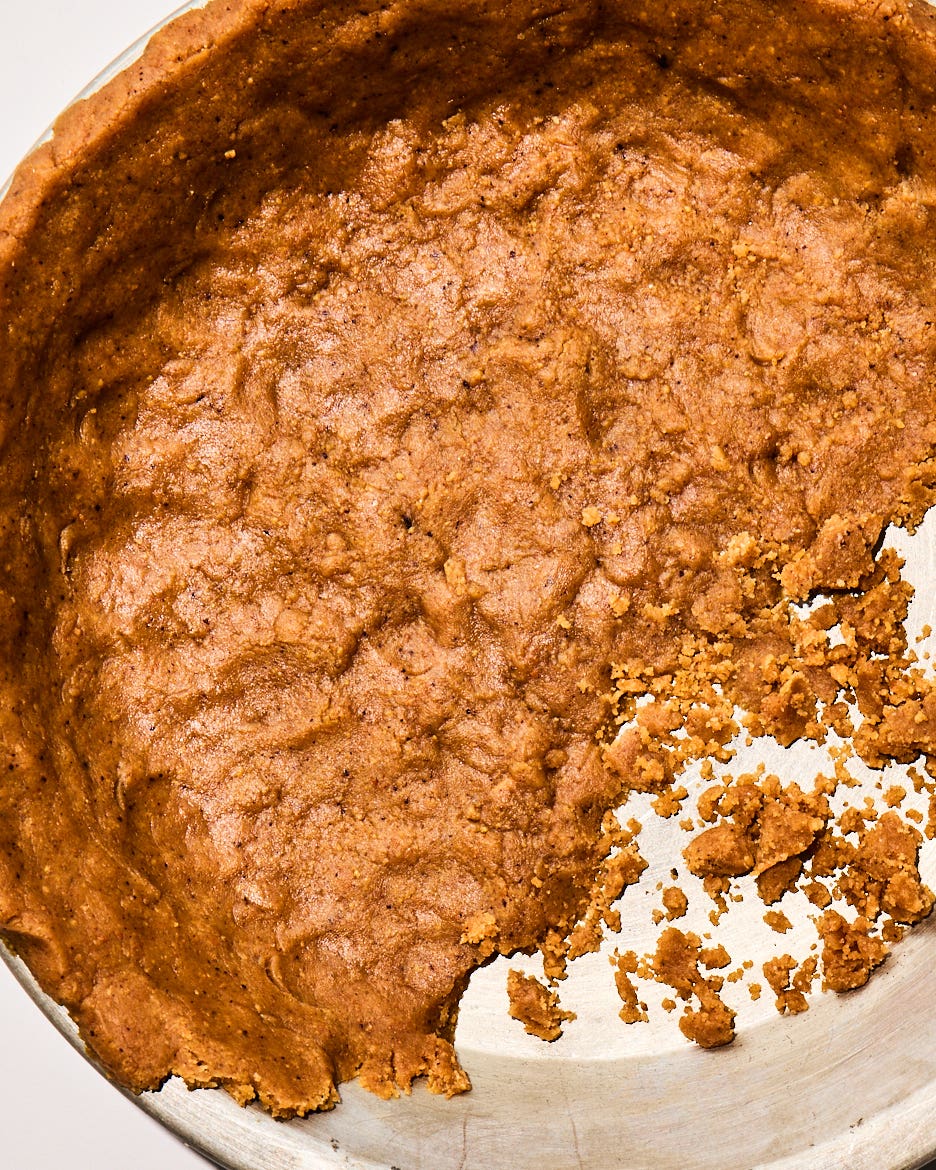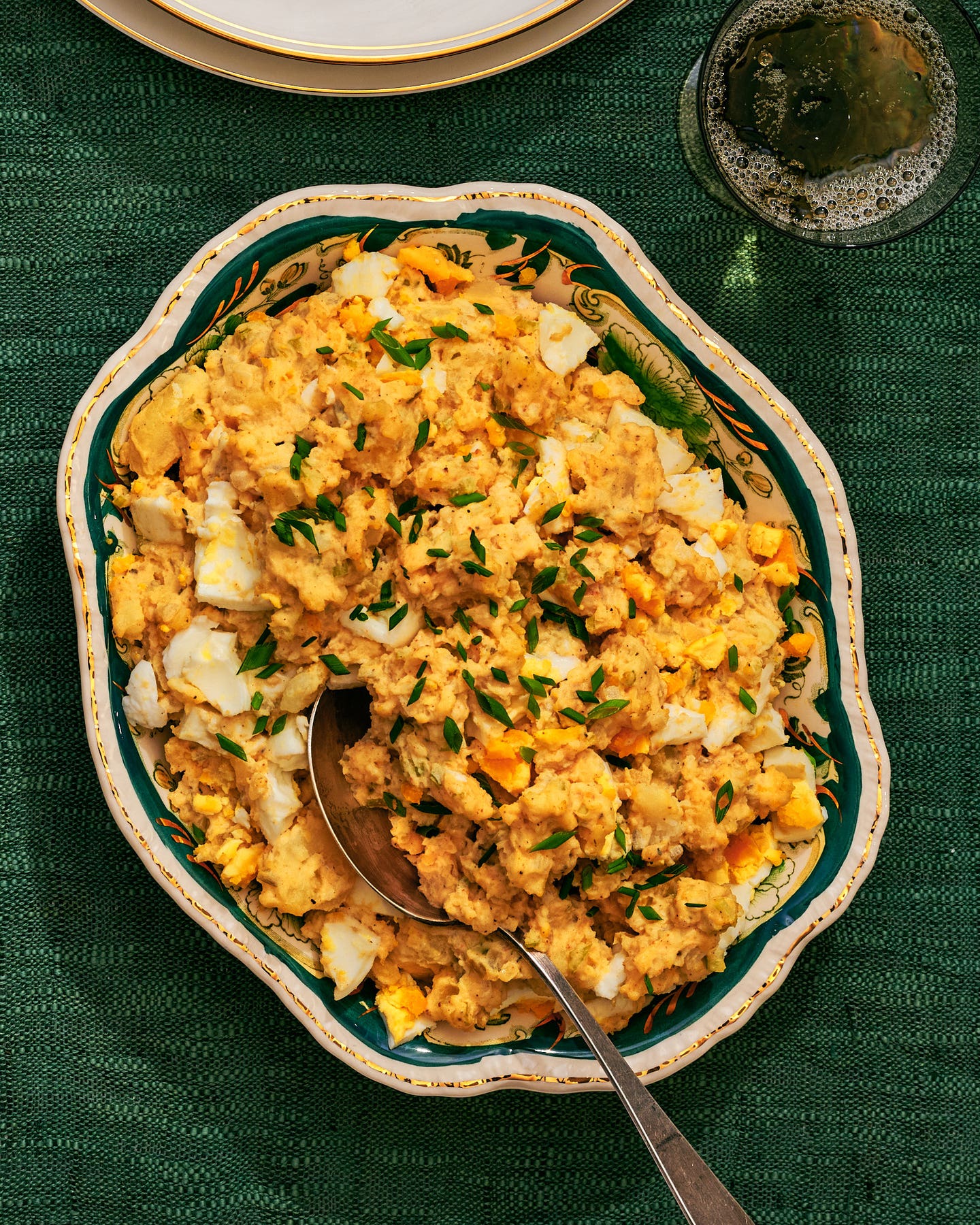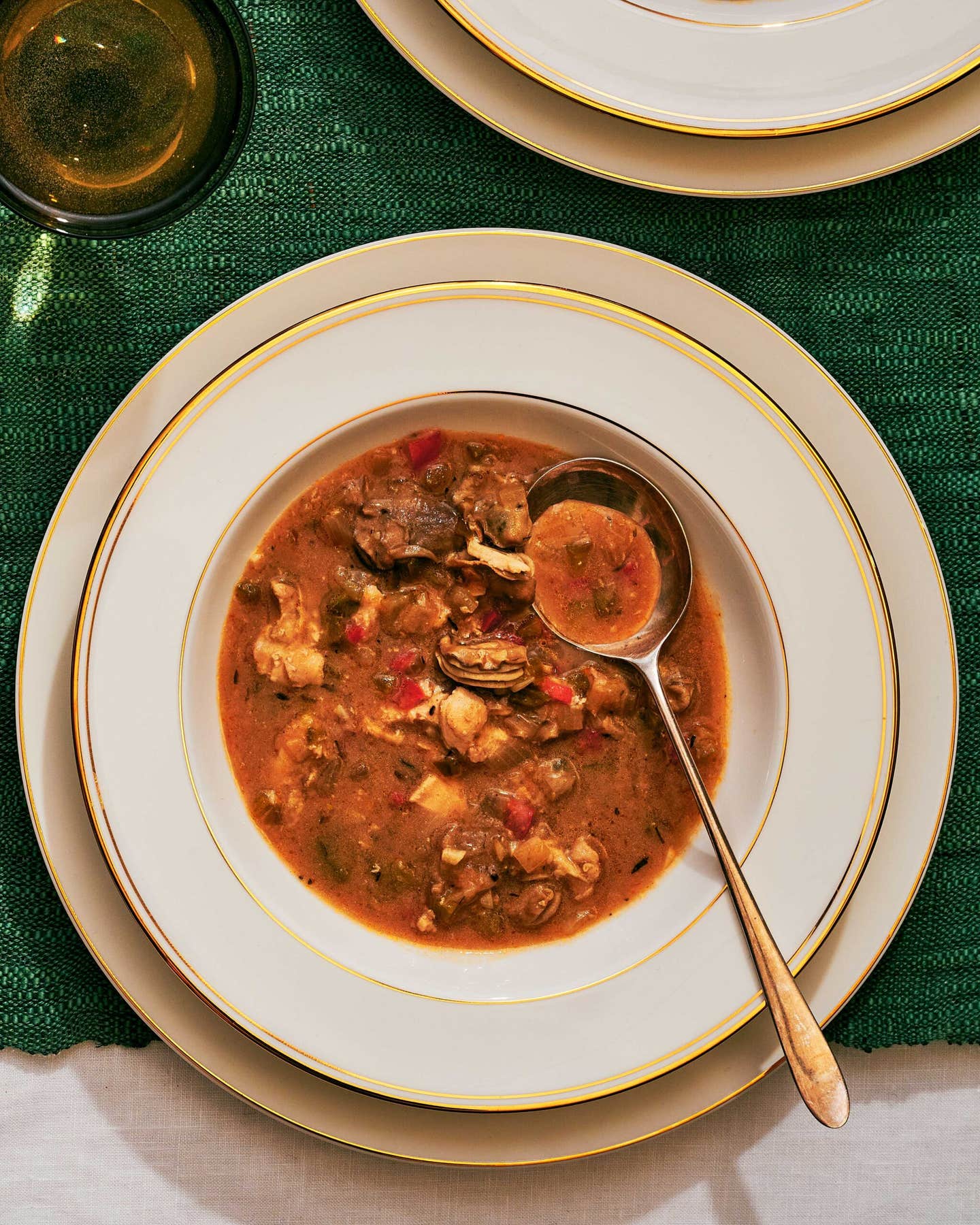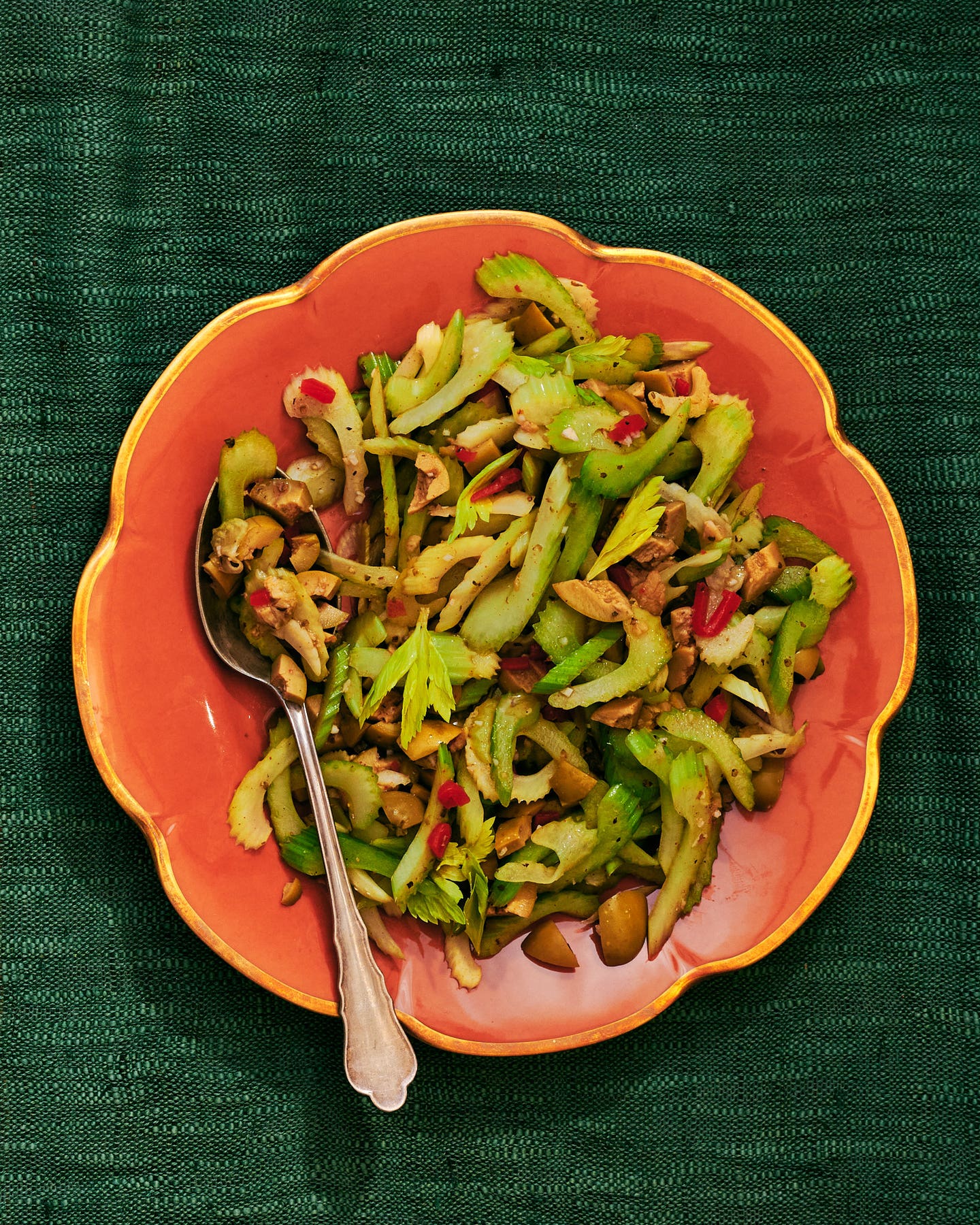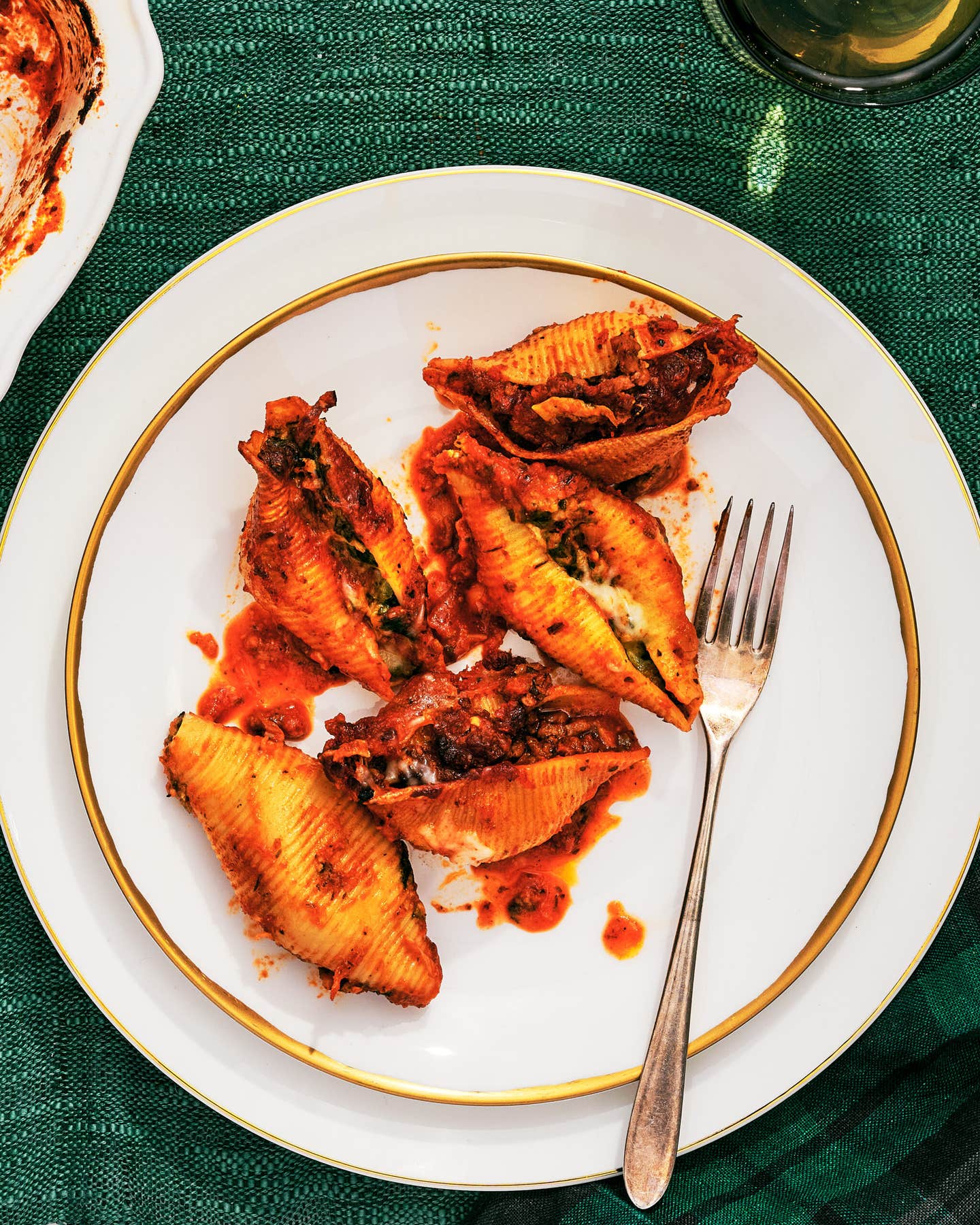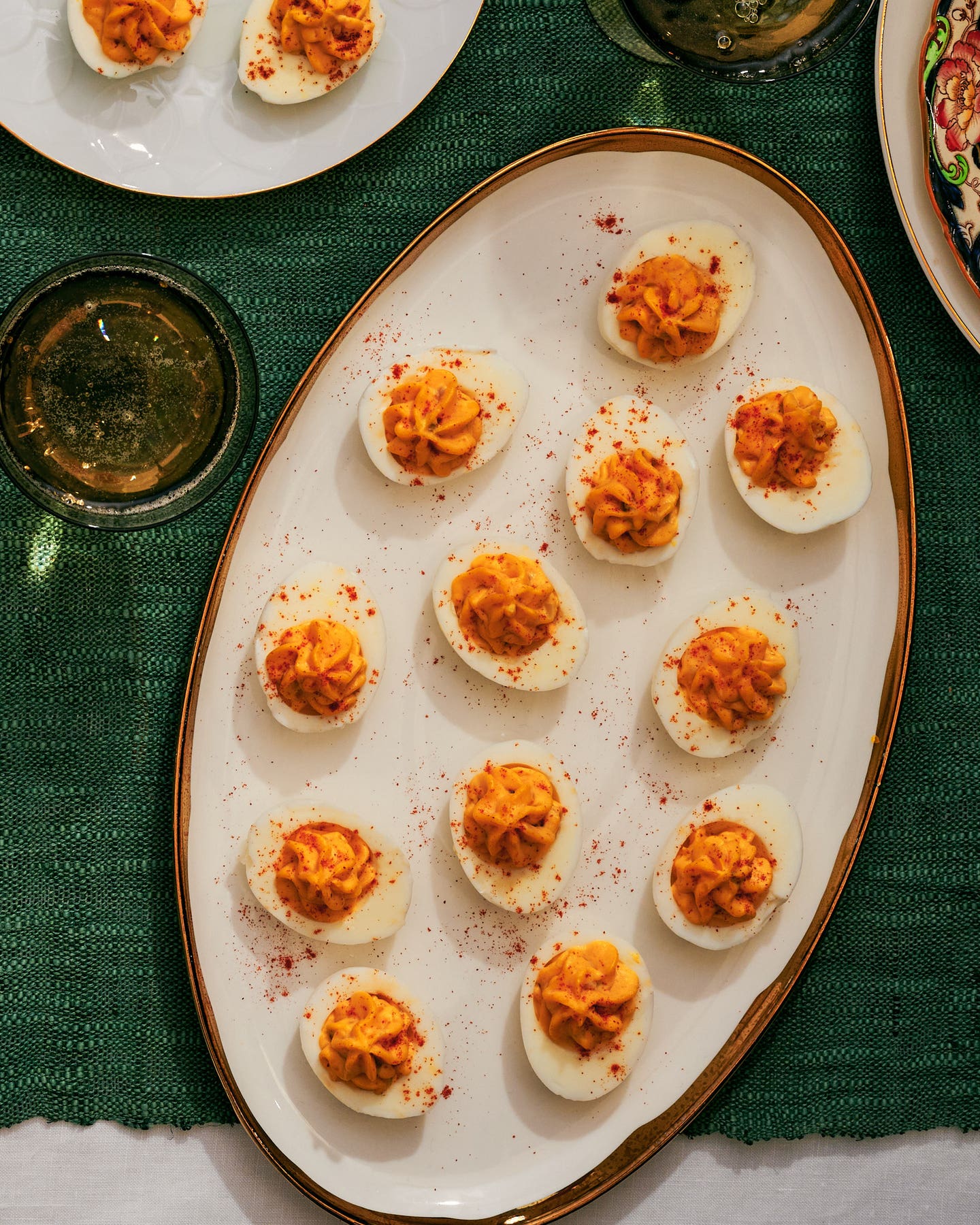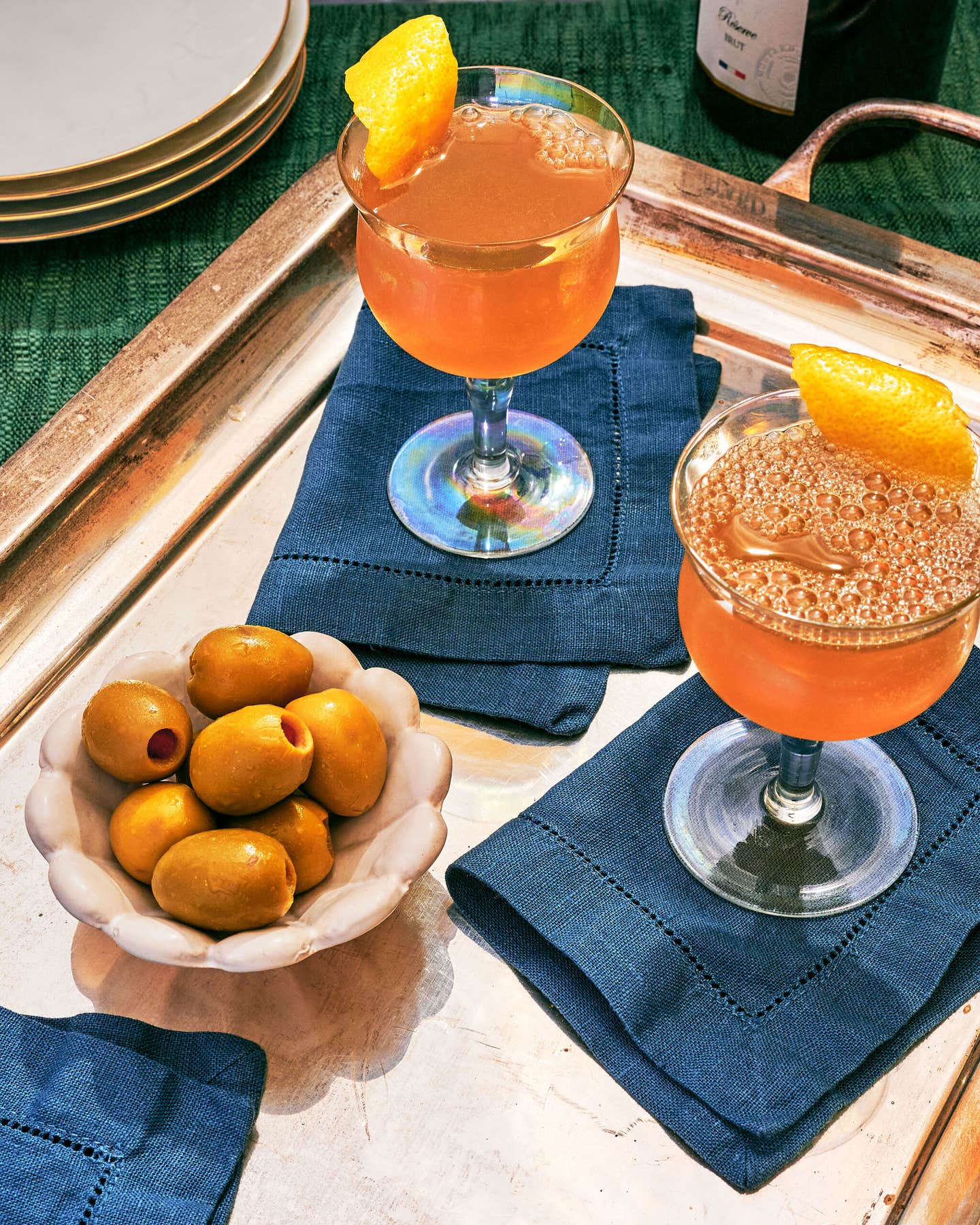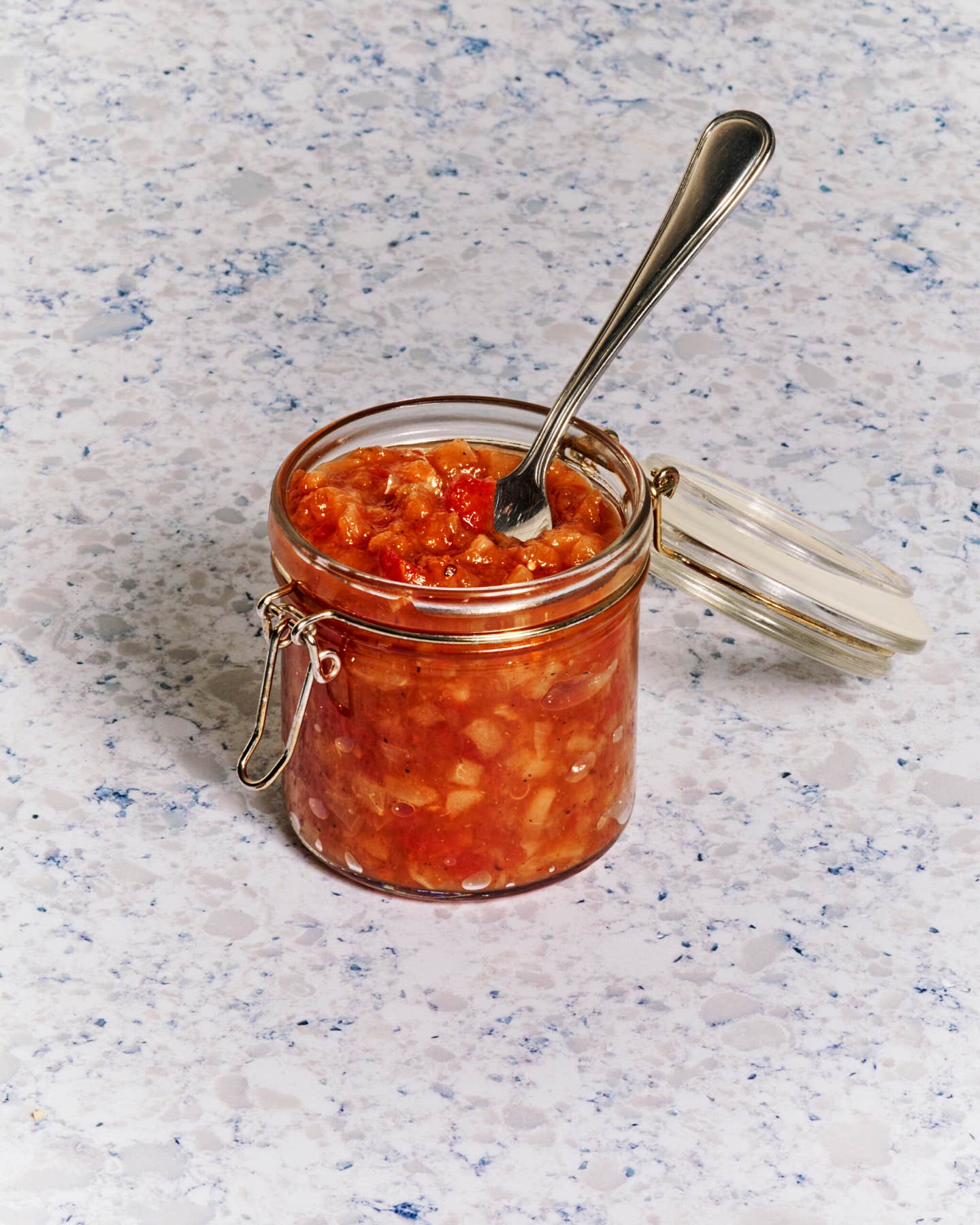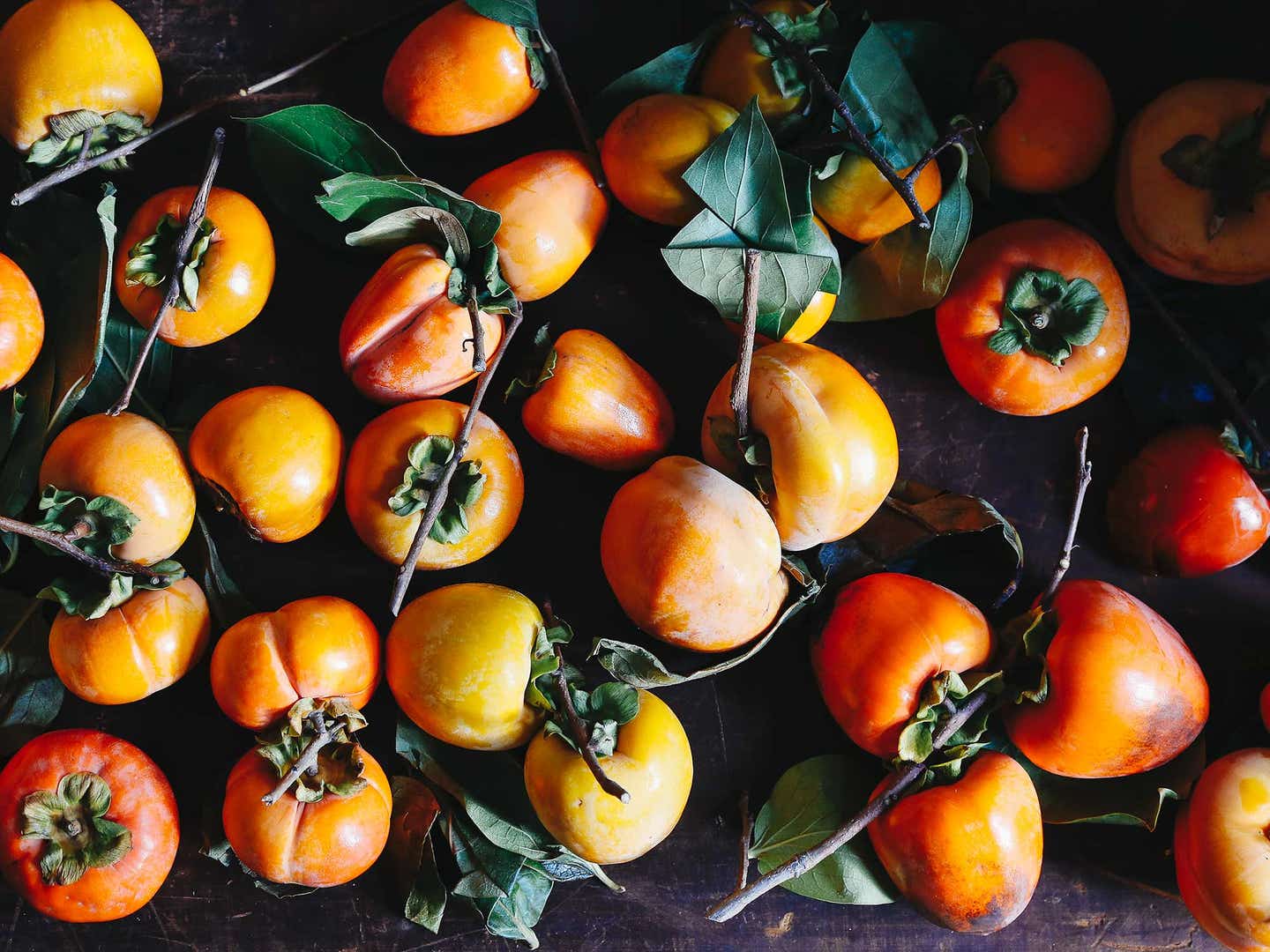
Stop What You’re Doing and Eat All the Persimmons You Can
How to shop for and cook with this weird delicious fruit that’s in season right now
I’ll never forget the first time I had a persimmon. I was six years old and convinced I was biting into a tomato. At first I thought my grandpa Danny was trying to trick me by calling a tomato a name I’d never heard before; then I was completely surprised by the most unique sweet flavor I’d ever tasted. I did some kind of unconscious dance/shimmy/hum as I devoured the rest (much to grandpa Danny’s amusement).
It was a hachiya persimmon, and it was perfectly ripe, and I had a hard time not letting the jam-like flesh get everywhere. Since then, I’ve looked forward to persimmon season with a shout-it-from-the-rooftops kind of excitement.
Take note: It's persimmon season right now. And I'm going to shout it from the rooftops.
A Little Persimmon Love
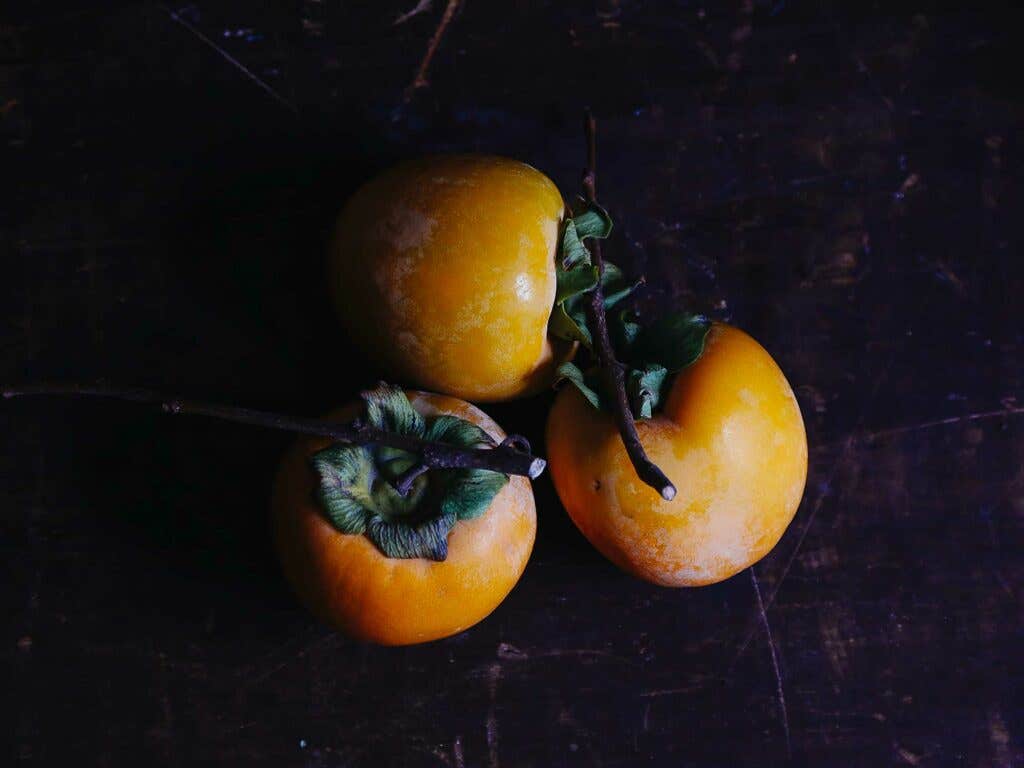
When I'm into a type of produce, I have a tendency to get a little obsessive. So right now I'm having a love affair with persimmons, and I've been doing all kinds of research to get to know more about them. I've talked to farmers who specialize in persimmons. I've done my best to try every different type I could get my hands on (you know, for "research"). In case you're unfamiliar with these magical golden orbs, here's a breakdown of every variety I've been able to track down. Hopefully it'll help you get into the season.
First, a fun fact: According to my friends at Penryn Orchards, who ship some of their persimmons nationwide, persimmon trees set fruit whether or not their blossoms were pollinated in the spring. Pretty rare among fruit trees (I told you these things were special). How can you tell if your persimmons were pollinated? Check for seeds. The presence of seeds means yes. No seeds? The fruits are still edible.
What to Shop For
The Basic: Fuyu
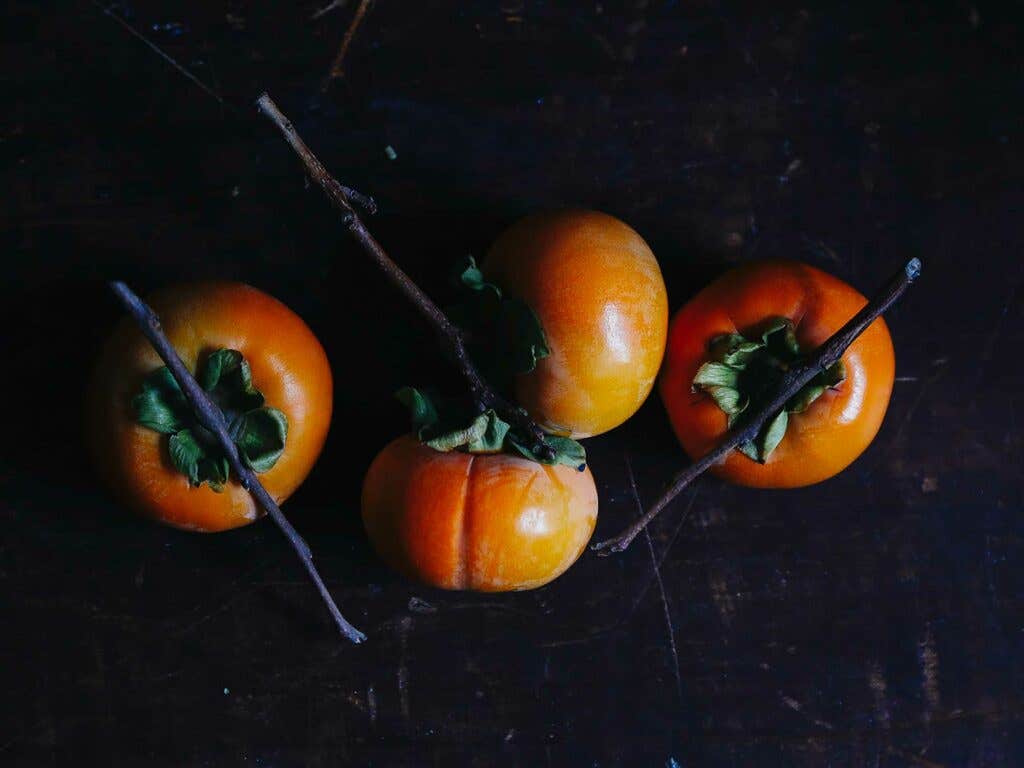
The most commonly known type of persimmon is probably the Fuyu. They’re squat, firm, and have a long shelf-life. They can handle being shipped without too much damage, so they’re more likely to be in grocery stores. Scientifically, they’re categorized as pollination-constant, non-astringent. This means that their flesh will stay the same orange color whether or not they have seeds, and that they can be eaten firm.
Other relatives of the Fuyu are: Gosho (giant Fuyus), and Jiro (flatter, and more squat Fuyus).
What to cook with them: These guys are great sliced nicely or even out of hand like apples. I'm also into having them with cured meats and cheese—prosciutto and persimmons are a lovely combination. Also try adding them into salads, flambe to shloop over ice cream, or puree them to make these persimmon bars.
The Jam-Like: Hachiya
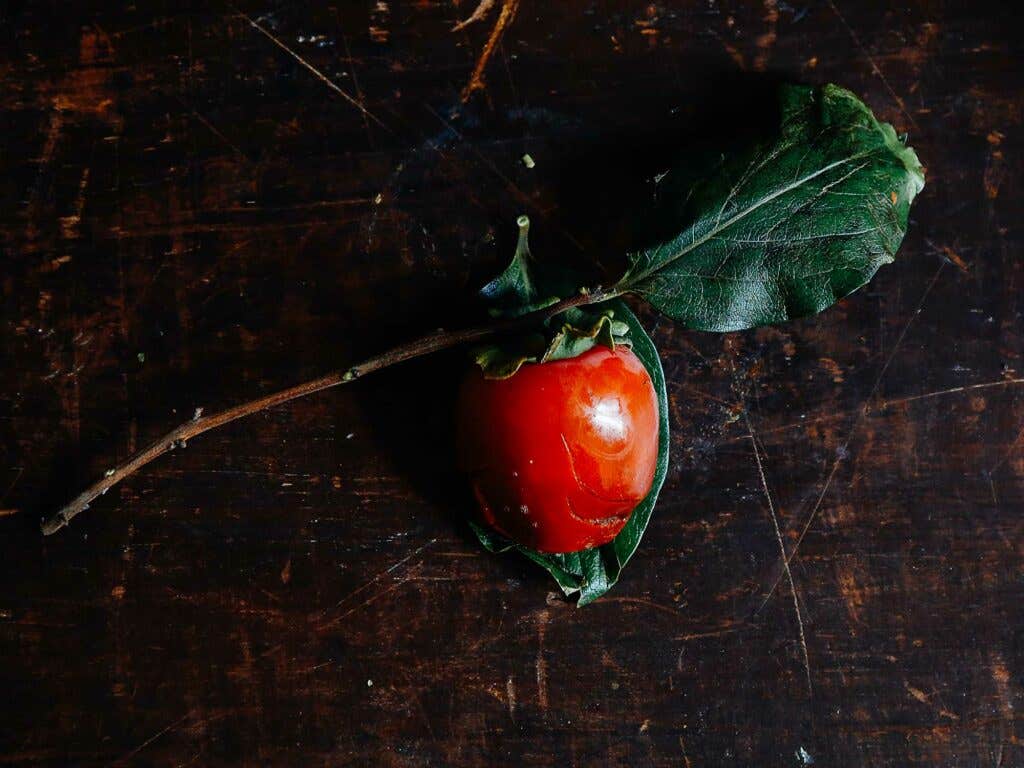
These are much more fragile and less common in grocery stores. If you’re lucky enough to live in places they’re grown (hello, California), look for these at farmers’ markets, or make friends with someone who has them in their yard. Hachiyas are pollination-constant, astringent. Astringent means that these guys have to be fully ripe and jelly soft before you can eat them. This is a good lesson in patience: try an unripe Hachiya and you’ll get nothing but a punishingly pucker-y, mouth-drying sensation.
Other members of the Astringent Persimmon family include Tanenashi, which are generally lighter smaller, and more angular than Hachiyas. And Tamopan, which are shaped like a cross between an acorn and a persimmon and have hints of mango flavor.
What to cook with them: I've been treating Hachiya and other astringent varieties just like jam, they're topping well-buttered toast, thick yogurt, and sweetening my oatmeal. Eat them plain with a spoon, or freeze the flesh for a lo-fi sorbet. We're big fans of this spiced persimmon frozen yogurt and this dense, delicious baked persimmon pudding.
And the Weird Persimmons
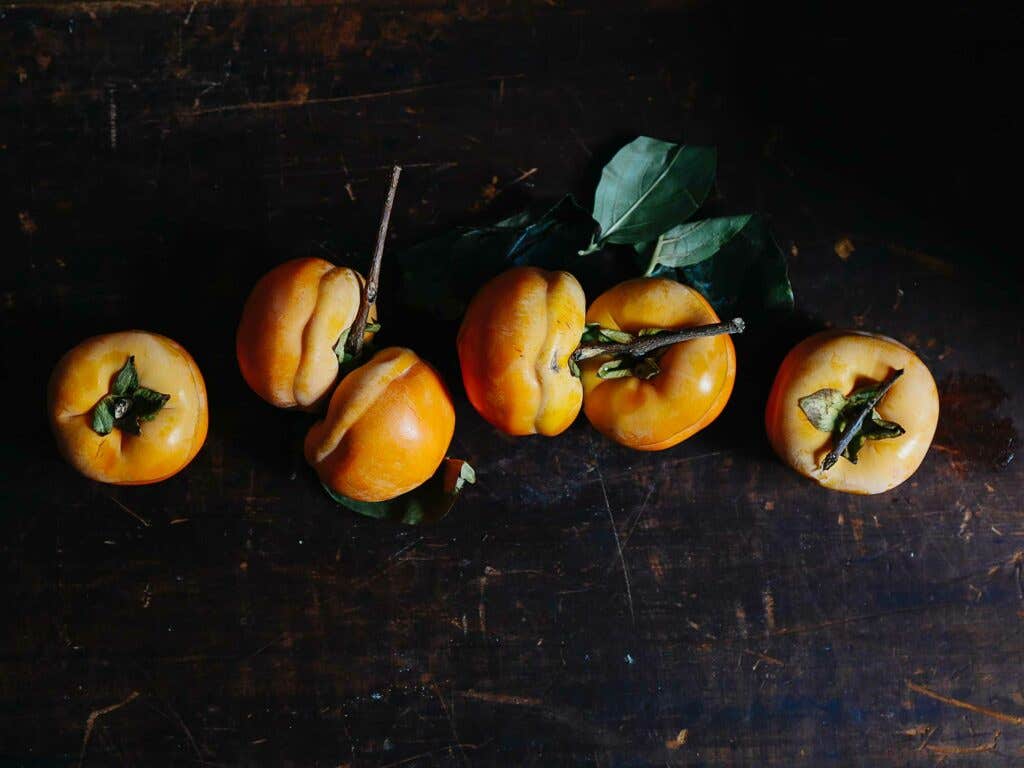
There’s an even more rare and special family of persimmons categorized as pollination-variant, non-astringent. These guys, when properly pollinated, will have brown flesh and can be eaten firm or soft. The brown flesh is a result of alcohol leaching from the seeds, which causes tannins in the flesh to cling together and darken. If these persimmons aren’t pollinated, they’re astringent and can only be eaten soft. If they’re partially pollinated, half of the flesh will be brown and can be eaten firm, the other half will be puckery—and there’s no real way for us non-experts to tell if they’ve been pollinated without cutting one open. The brown pulp has a distinct, rich flavor with hints of cocoa and cinnamon.
Members of this family are known as: Tsuronoko (chocolate), Maru (cinnamon), and Hyakume (brown sugar) persimmons. They're hard to find, and your best bet is contacting a grower directly. Penryn grows all of them.
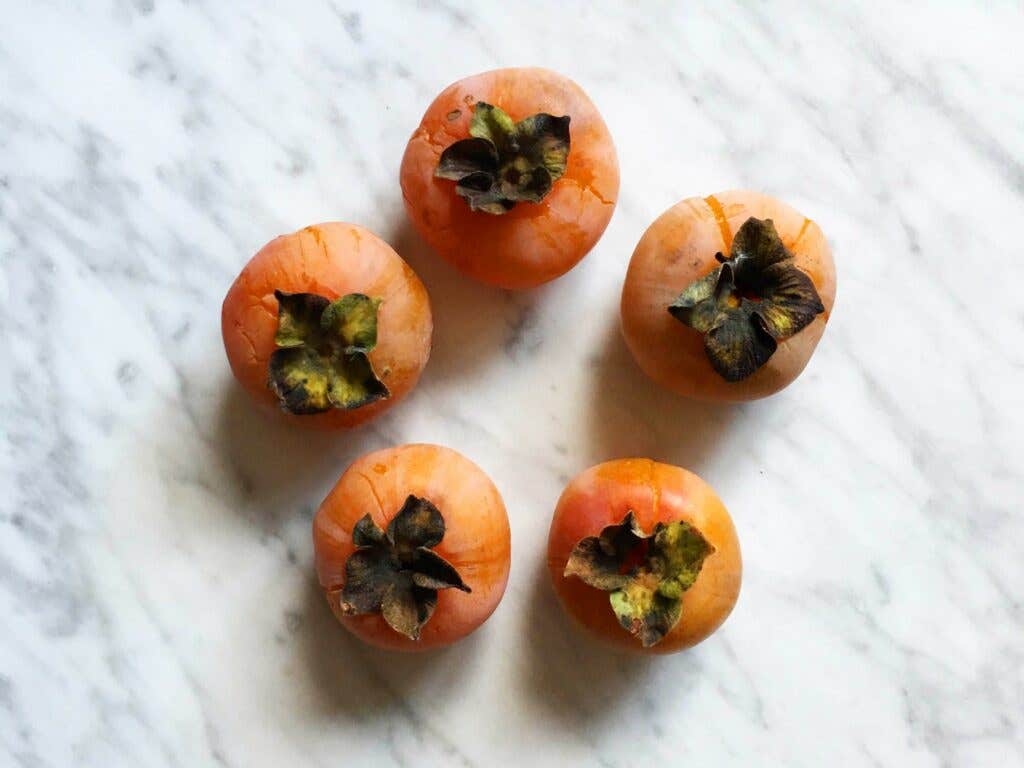
And, finally, the American persimmon. The only fruit on this list that’s actually from to the US (all the others came to the US from Asia). These tiny fruits (typically one-inch in diameter) are native to the eastern United States, and are only going to be found at a farmers’ markets. They’re pollination-constant and astringent, so make sure their skins are wrinkled and their flesh is soft before you eat one. Ripe American persimmons are like a tangy, apricot-y, caramel-y pudding, good enough to make you do a little shimmy dance.
Keep Reading
Continue to Next Story
